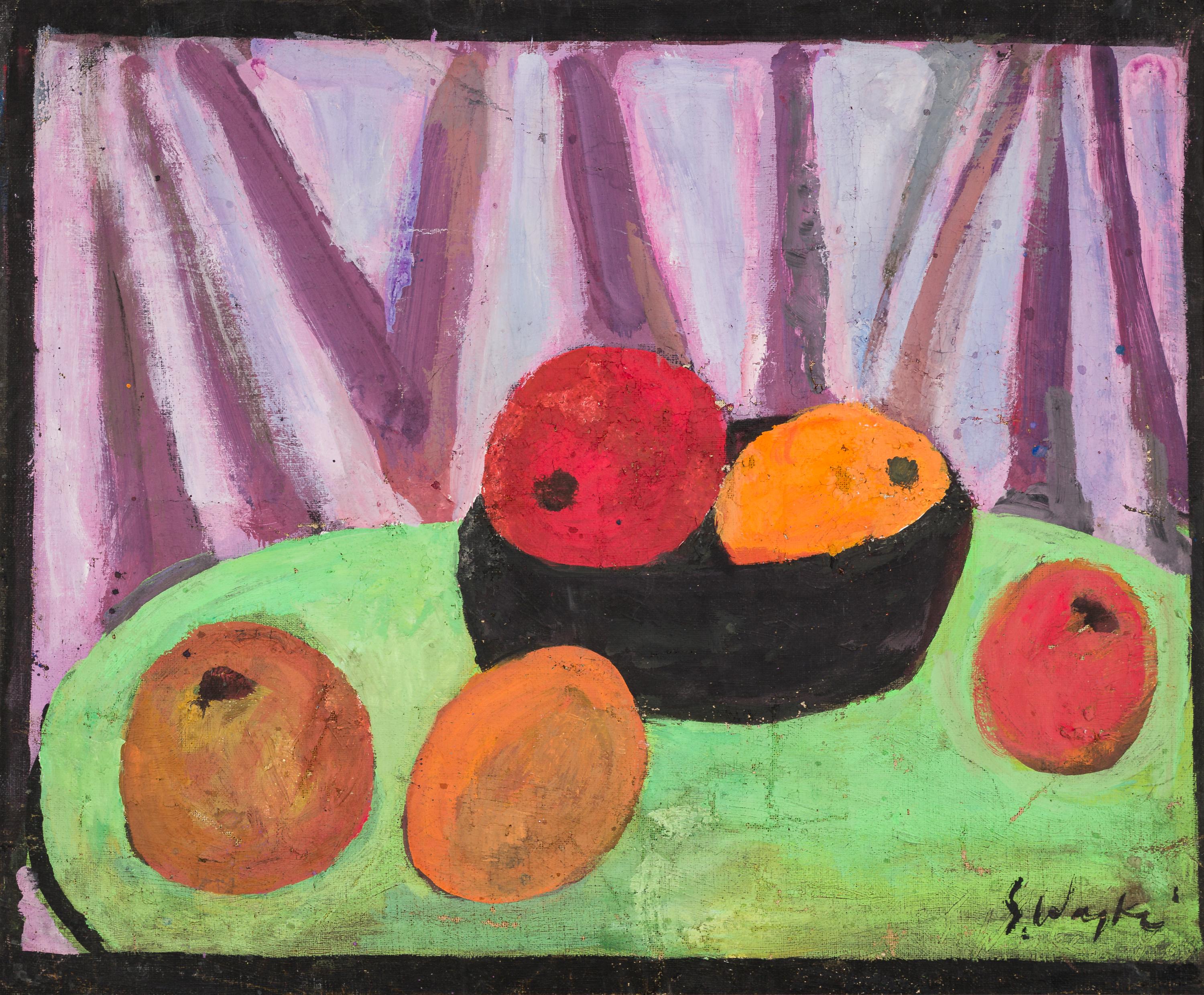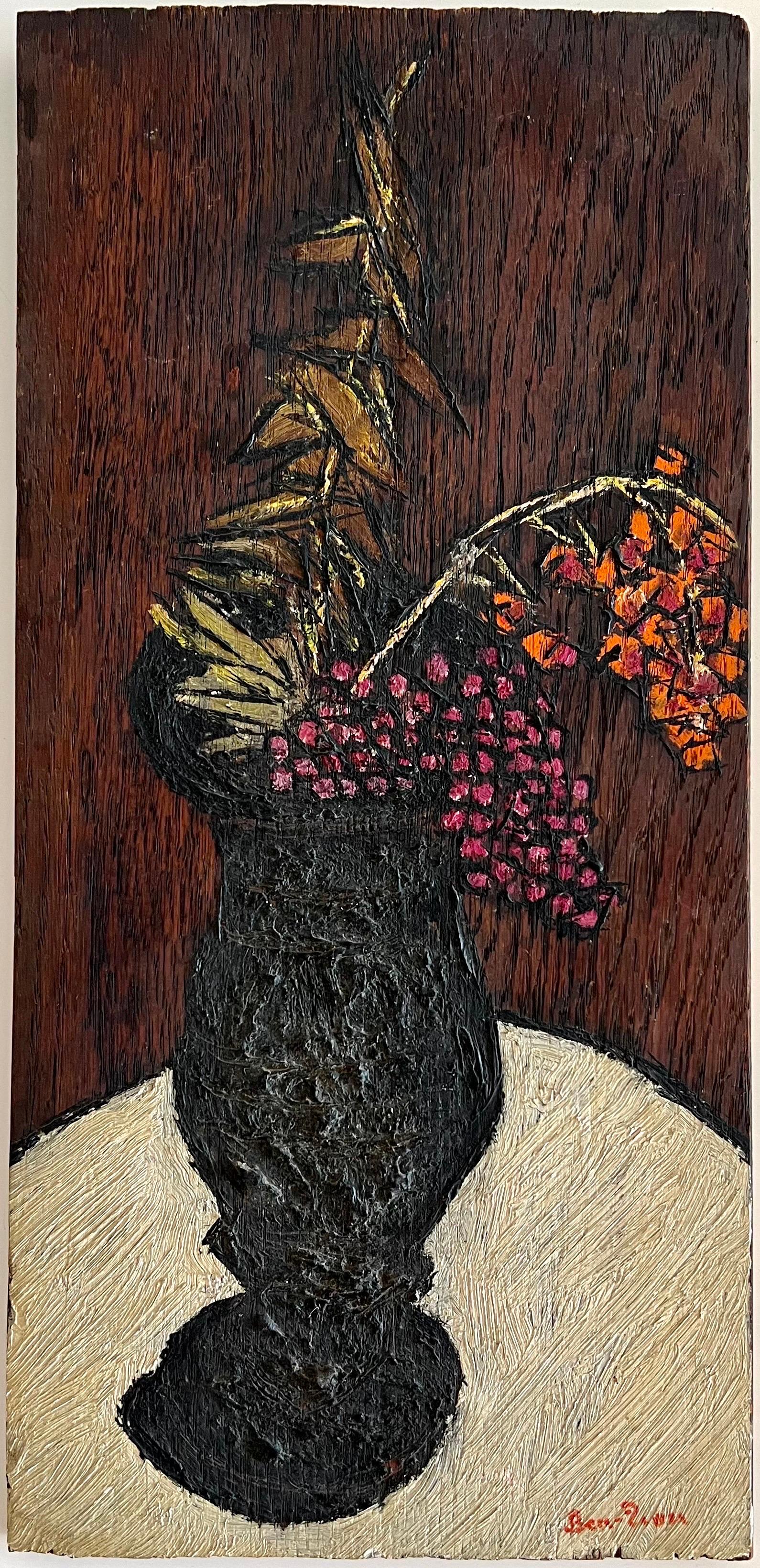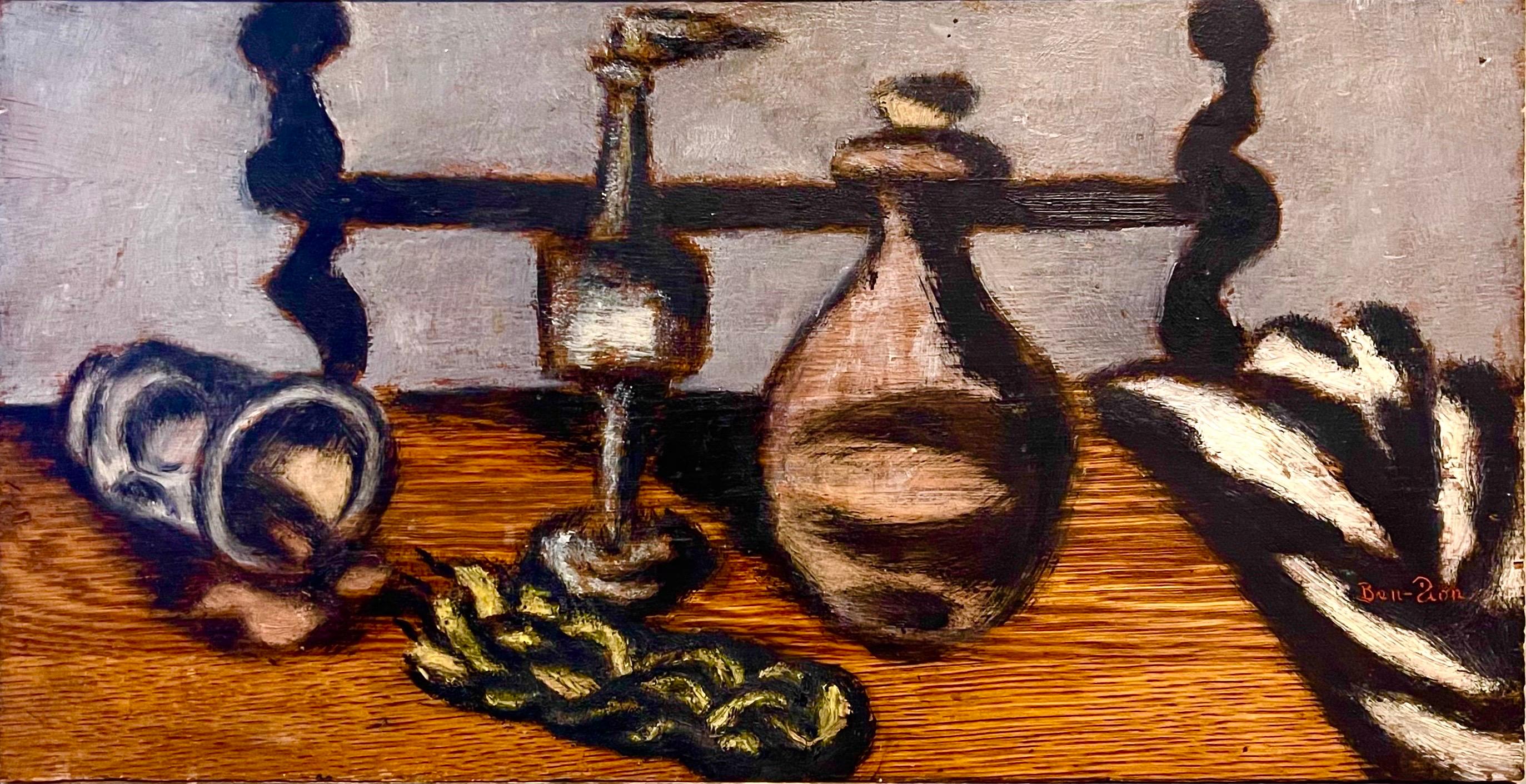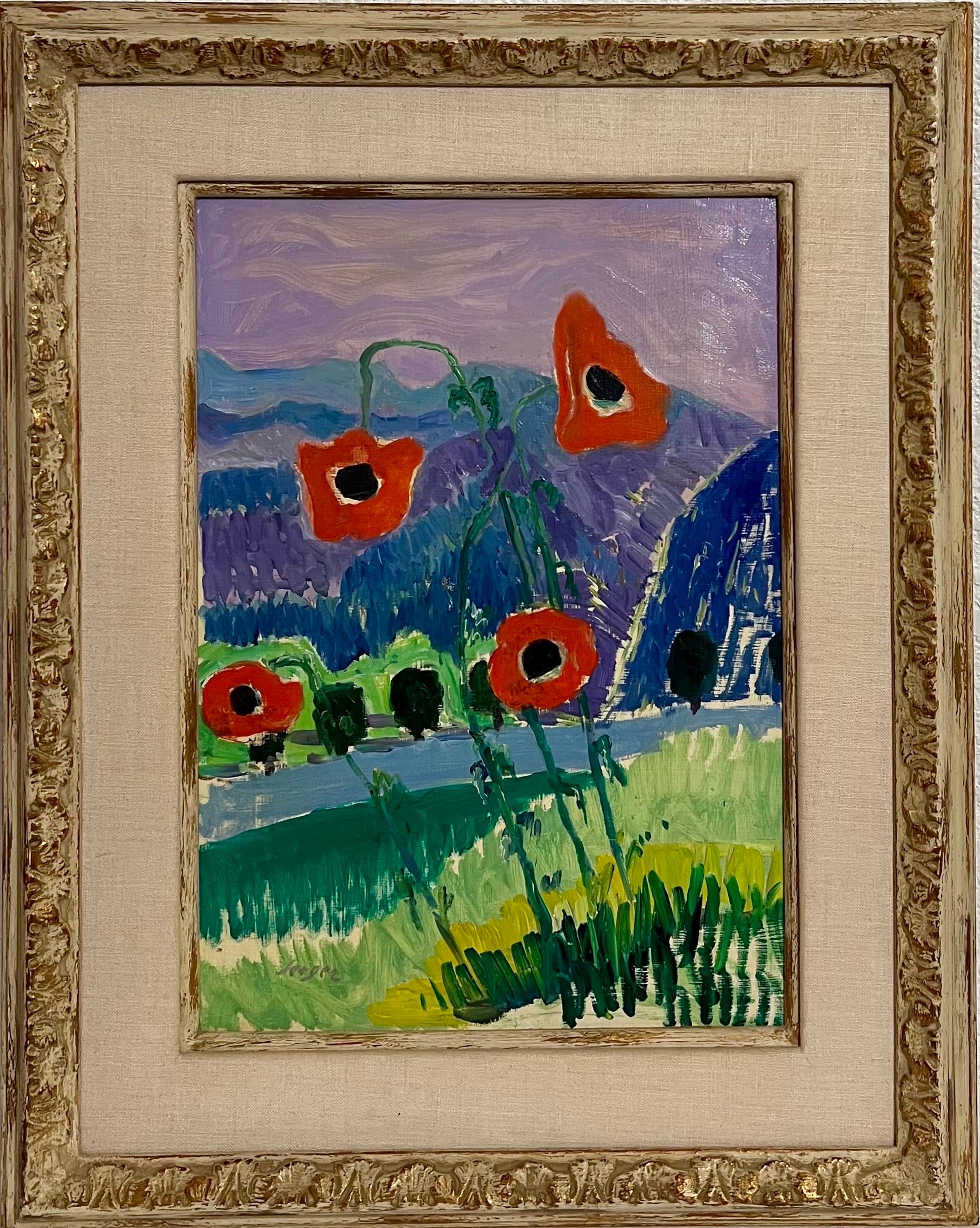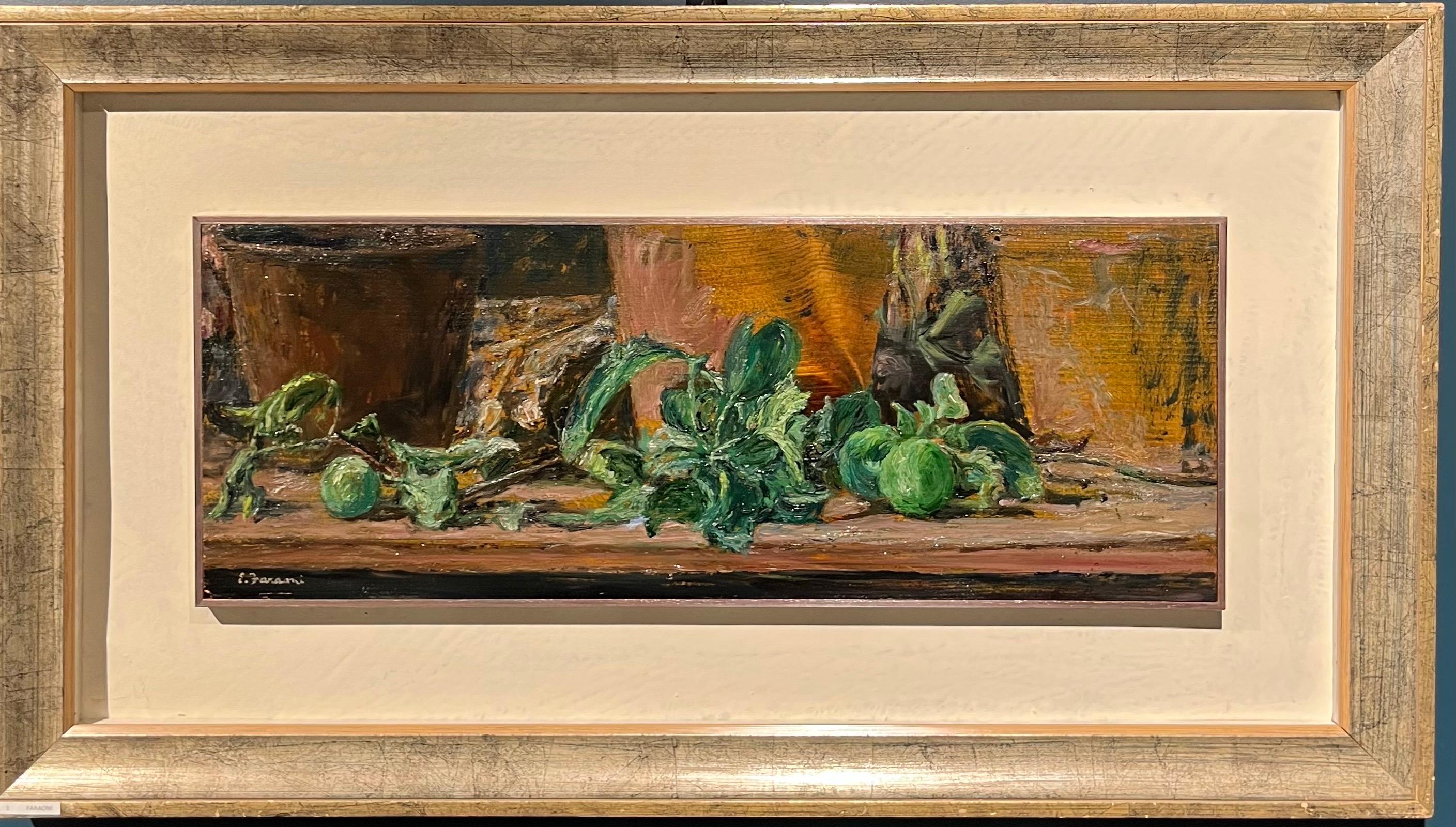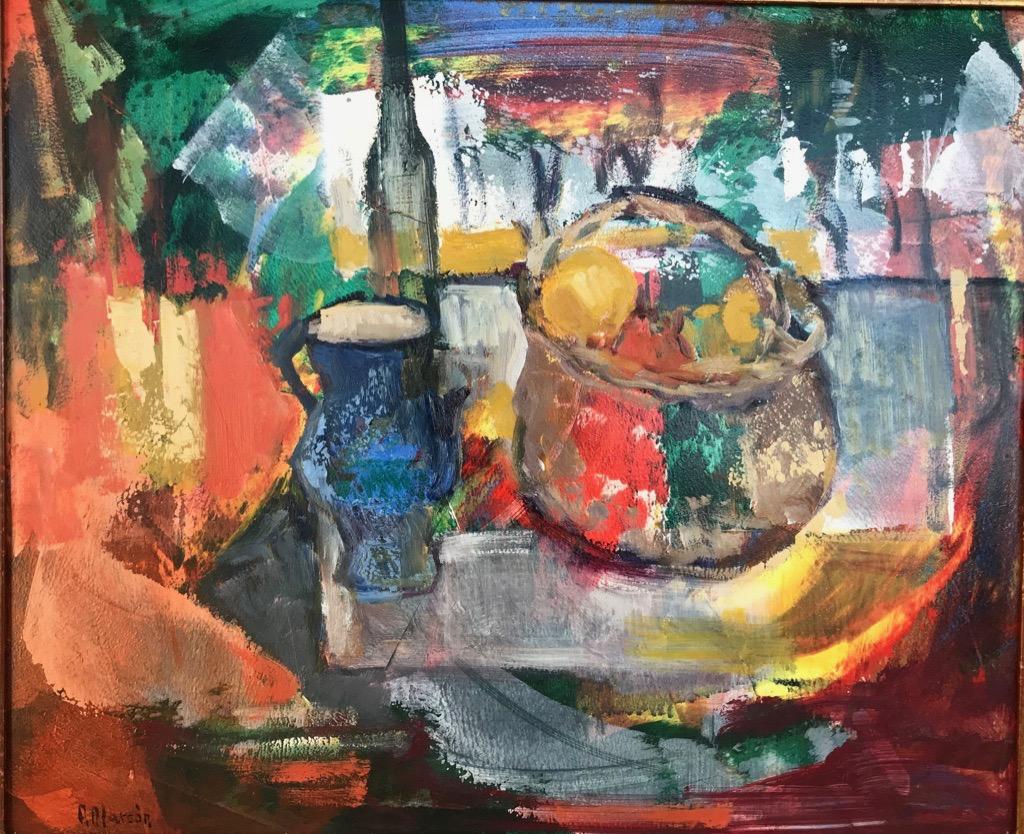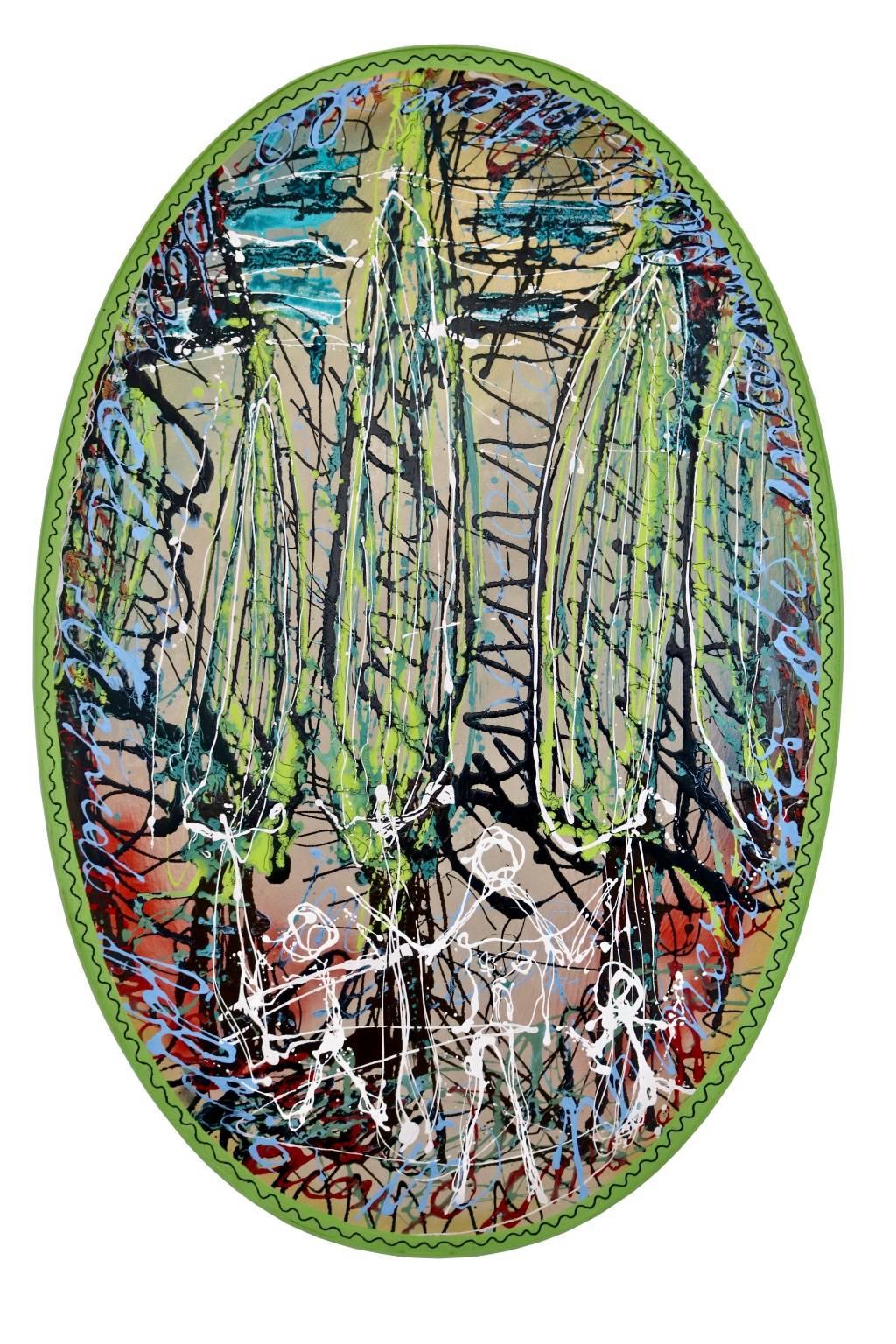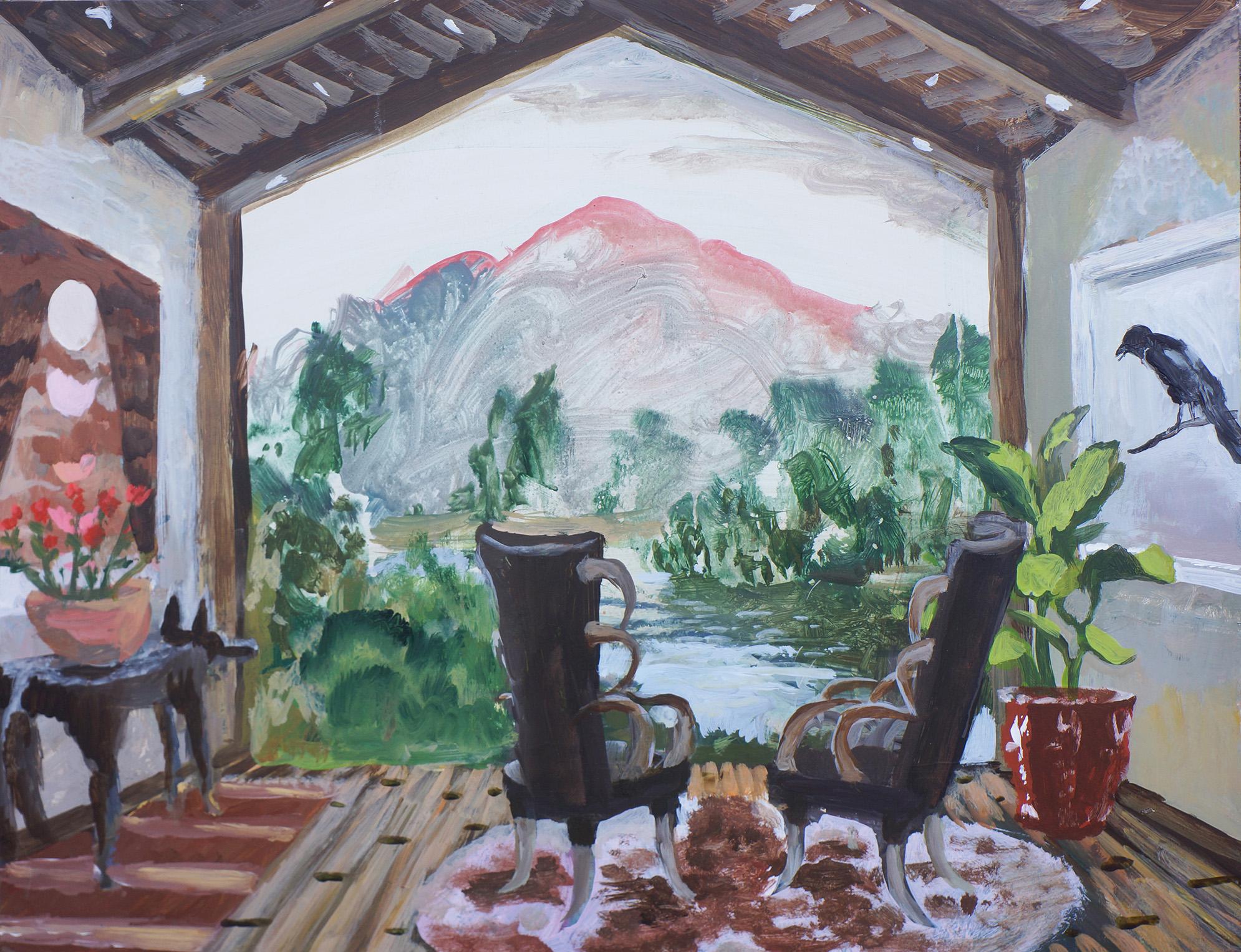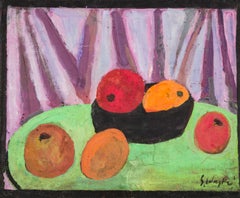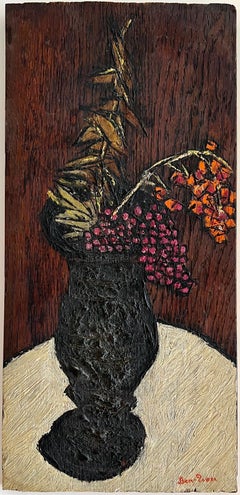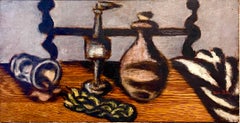Still-life of flowers in yellow - early 20th century modernist painting De Ploeg
1 of 15
Jan Altink Still-life of flowers in yellow - early 20th century modernist painting De Ploeg1923
1923
About the Item
- Creator:Jan Altink (1885 - 1971)
- Creation Year:1923
- Dimensions:Height: 25.2 in (64 cm)Width: 21.26 in (54 cm)Depth: 1.78 in (4.5 cm)
- Medium:
- Movement & Style:
- Period:
- Condition:
- Gallery Location:Nuenen, NL
- Reference Number:Seller: HTZ190021stDibs: LU120015595662
You May Also Like
- Fruit StilllifeBy Erich WaskeLocated in Wien, 9Deling with the work of Erich Waske today, one encounters first of all a number of reasons why this outstanding artist has fallen into such undeserved oblivion. In addition to the de...Category
20th Century Expressionist Still-life Paintings
MaterialsOil, Panel, Laminate, Board
- American Modernist Oil Painting Expressionist Vase, Flowers WPA Artist Ben ZIonBy Ben-Zion WeinmanLocated in Surfside, FLBen-Zion (1897-1987) Flower Piece with Black Vase Oil on board, Hand signed 'Ben-Zion ' lower right, with the artist 's label and label from Duveen-Graham gallery, NY. 16 x 7 3/4 i...Category
Mid-20th Century Expressionist Figurative Paintings
MaterialsOil, Wood Panel
- Expressionist Judaica Havdalah Oil Painting Jewish American Modernist Ben ZionBy Ben-Zion WeinmanLocated in Surfside, FLOil Painting of still life Havdalah scene with braided candle, spice tower box and kiddush cup. Born in 1897, Ben-Zion Weinman celebrated his European Jewish heritage in his visual works as a sculptor, painter, and printmaker. Influenced by Spinoza, Knut Hamsun, and Wladyslaw Reymont, as well as Hebrew literature, Ben-Zion wrote poetry and essays that, like his visual work, attempt to reveal the deep “connection between man and the divine, and between man and earth.” An emigrant from the Ukraine, he came to the US in 1920. He wrote fairy tales and poems in Hebrew under the name Benzion Weinman, but when he began painting he dropped his last name and hyphenated his first, saying an artist needed only one name. Ben-Zion was a founding member of “The Ten: An Independent Group” The Ten” a 1930’s avant-garde group, Painted on anything handy. Ben-Zion often used cabinet doors (panels) in his work. Other members of group included Ilya Bolotowsky, Lee Gatch, Adolph Gottlieb, Louis Harris, Yankel Kufeld, Marcus Rothkowitz (later known as Mark Rothko), Louis Schanker, and Joseph Solman. The Art of “The Ten” was generally described as expressionist, as this style offered the best link between modernism and social art. Their exhibition at the Mercury Gallery in New York held at the same time as the Whitney Annual Exhibition of Contemporary American Painting, included a manifesto concentrating on aesthetic questions and criticisms of the conservative definition of modern art imposed by the Whitney. Ben-Zion’s work was quickly noticed. The New York Sun said he painted “furiously” and called him “the farthest along of the lot.” And the triptych, “The Glory of War,” was described by Art News as “resounding.” By 1939, The Ten disbanded because most of the members found individual galleries to represent their work. Ben-Zion had his first one-man show at the Artist’s Gallery in Greenwich Village and J.B. Neumann, the highly esteemed European art dealer who introduced Paul Klee, (among others) to America, purchased several of Ben-Zion’s drawings. Curt Valentin, another well-known dealer, exhibited groups of his drawings and undertook the printing of four portfolios of etchings, each composed of Ben-Zion’s biblical themes. He worked as a WPA artist. Ben-Zion’s work is represented in many museums throughout the country including the Metropolitan, the Whitney, and the Museum of Modern Art in New York, the Art Institute of Chicago, the Philadelphia Museum of Art and the Phillips Collection, Washington. The Jewish Museum in New York opened in 1948 with a Ben-Zion exhibition. Ben-Zion consistently threaded certain subject matter—nature, still life, the human figure, the Hebrew Bible, and the Jewish people—into his work throughout his life. "In all his work a profound human feeling remains. Sea and sky, even sheaves of wheat acquire a monolithic beauty and simplicity which delineates the transient as a reflection of the eternal. This sensitive inter- mingling of the physical and metaphysical is one of the most enduring features of Ben-Zion's works." (Excerpt from Stephen Kayser, “Biblical Paintings,” The Jewish Museum Catalogue, 1952). Mystical Imprints: Marc Chagall, Ben-Zion, and Ben Shahn presents the print work of three prominent 20th century Jewish artists born in the Russian Empire. Among these seventy pieces are etchings and lithographs from Chagall’s Bible series...Category
Mid-20th Century Expressionist Still-life Paintings
MaterialsOil, Wood Panel
- French Fauvist Post Impressionist Oil Painting Frederick Serger Ecole de ParisBy Frederick B. SergerLocated in Surfside, FLFrederick Serger Genre: Post Impressionist Subject: Flowers, Poppies Medium: Oil Surface: Panel Frederick Serger (given name Frederick Bedrick Sinaberger) was born in 1889 to a family of Jewish manufacturers in the village of Ivancice near Brno Moravia, a province of Czechoslovakia. Showing artistic talent at a young age, he attended art schools in Brno, Czech, Vienna, Austria and Munich, Germany. During World War I, Serger joined the Austrian Army and served in the Balkans. Once his service ended, he traveled to Paris where he resumed his art training and eagerly joined the Ecole de Paris (School of Paris) artists’ movement. During this period, he was greatly influenced by the Impressionist, Post-Impressionist, and Expressionist movements. While living in Paris, he met and married Helen Spitzer. Serger and his young wife moved from Paris to Scoczow, a city on the Polish-Czech border. They remained in Scoczow for 12 years and he continued to work as an artist, exhibiting in museums in Cracow and Warsaw, Poland. He also showed at the Paris Salon de Tuilleries and the Salon d’Automne. He was part of the generation of expat artists, mostly jewish known as the School of Paris. They created art in the styles of Post-Impressionism, Cubism and Fauvism. The group included artists Marc Chagall, Chaim Soutine, Amedeo Modigliani and Piet Mondrian. Associated French artists included Pierre Bonnard, Henri Matisse, Jean Metzinger and Albert Gleizes. Many École de Paris artists lived in the iconic La Ruche, a complex of studio apartments and other facilities in Montparnasse on the Left Bank, at 2 Passage Dantzig, built by a successful sculptor, Alfred Boucher, who wanted to develop a creative hub where struggling artists could live, work and interact. A significant subset, the Jewish artists, came to be known as the Jewish School of Paris or the School of Montparnasse. The core members were almost all Jews, included Emmanuel Mane-Katz, Abraham Mintchine...Category
1940s Expressionist Figurative Paintings
MaterialsOil, Panel
- "Green apples on the table" Oil on wood cm. 63 x 25 1970By Enzo FARAONILocated in Torino, ITStill life, Apples, Green, Enzo FARAONI (S. Stefano Magra, La Spezia, 1920/2017) Enzo Faraoni is a great painter and engraver from Florence; he expresses the poetic everyday life o...Category
1970s Expressionist Still-life Paintings
MaterialsOil, Wood Panel
- Interior with fruit . Colorful Expressionist Still-life Oil paintingBy Aracely AlarcónLocated in Segovia, ESInterior with fruit (Interior con frutas). Expressionist Colorful Oil on wood panel Still life with view in the background, Author: Aracely Alarcón. Me...Category
Early 2000s Expressionist Figurative Paintings
MaterialsOil, Wood Panel
